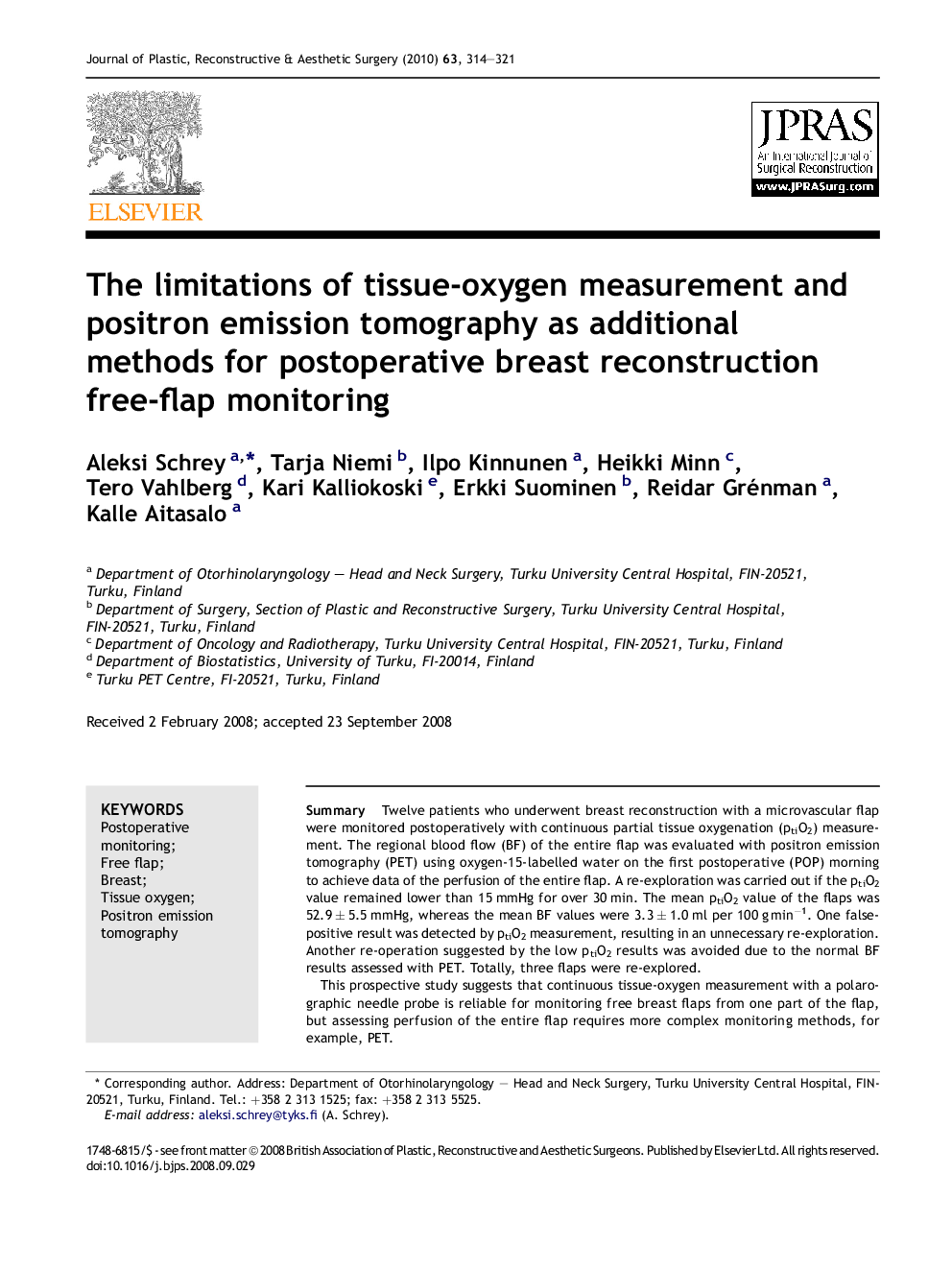| Article ID | Journal | Published Year | Pages | File Type |
|---|---|---|---|---|
| 4120177 | Journal of Plastic, Reconstructive & Aesthetic Surgery | 2010 | 8 Pages |
SummaryTwelve patients who underwent breast reconstruction with a microvascular flap were monitored postoperatively with continuous partial tissue oxygenation (ptiO2) measurement. The regional blood flow (BF) of the entire flap was evaluated with positron emission tomography (PET) using oxygen-15-labelled water on the first postoperative (POP) morning to achieve data of the perfusion of the entire flap. A re-exploration was carried out if the ptiO2 value remained lower than 15 mmHg for over 30 min. The mean ptiO2 value of the flaps was 52.9 ± 5.5 mmHg, whereas the mean BF values were 3.3 ± 1.0 ml per 100 g min−1. One false-positive result was detected by ptiO2 measurement, resulting in an unnecessary re-exploration. Another re-operation suggested by the low ptiO2 results was avoided due to the normal BF results assessed with PET. Totally, three flaps were re-explored.This prospective study suggests that continuous tissue-oxygen measurement with a polarographic needle probe is reliable for monitoring free breast flaps from one part of the flap, but assessing perfusion of the entire flap requires more complex monitoring methods, for example, PET.Clinical examination by experienced personnel remains important in free-breast-flap monitoring. PET could be useful in assessing free-flap perfusion in selected high-risk patients as an alternative to a re-operation when clinical examination and evaluation by other means are unreliable or present controversial results.
